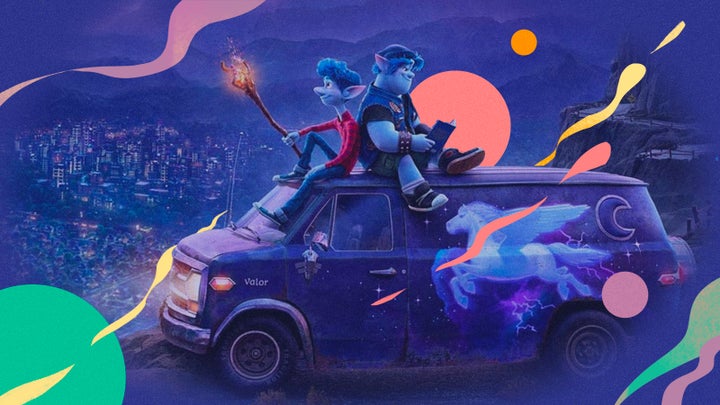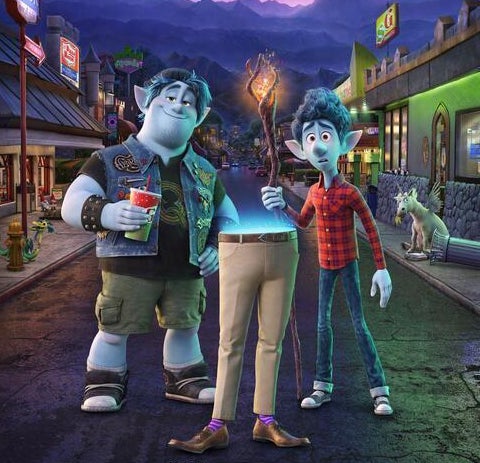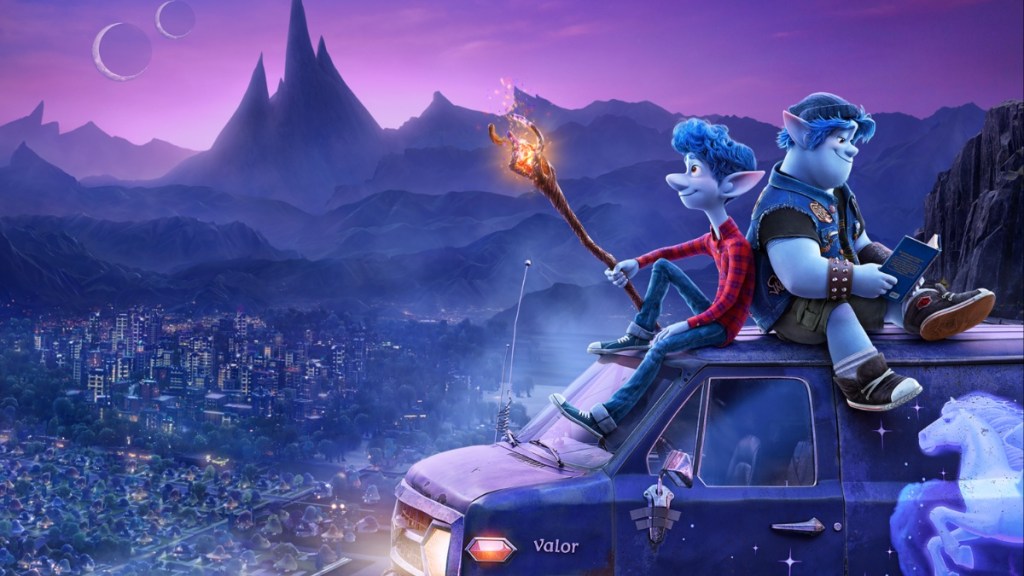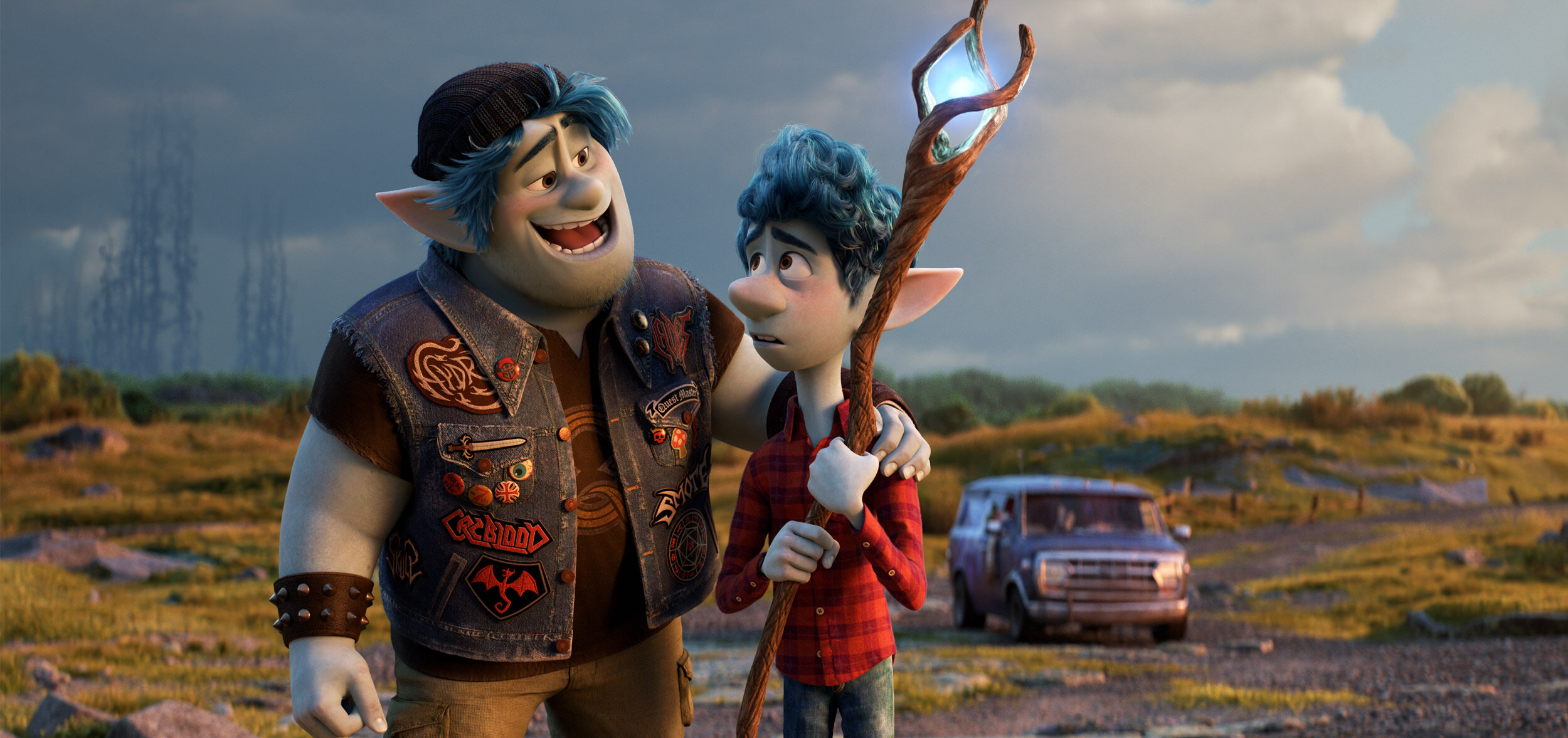Disney
“Onward” by Pixar Taught Me That Grieving Has No One ‘Right’ Path

The children’s movie shares a poignant and captivating story, imparting valuable lessons on the theme of loss that resonate with everyone.
In the year when I reached the milestone of turning 30, my life took an unexpected turn. I found myself on a journey, far from home, visiting my uncle and aunt in California. It was during this visit that I stumbled upon a book in their bookshelf – a book brimming with pictures of my father. I must confess that back home, I had a similar book, yet I had never truly delved into its contents. Those sepia-tinged photographs, which I had merely glanced at on occasion, held a profound truth that had eluded me.
In California, a transformation occurred. I found myself gazing at these pictures and, for the first time, seeing the man they depicted. Before my father’s tragic passing by suicide, his life was a tapestry of vibrant colors and dimensions.
One evening, on the rooftop of my relatives’ home, I shared a conversation with my aunt, watching as the sun dipped beneath the horizon, casting its warm glow on the vast expanse of the Pacific Ocean. We sipped sake and began to reminisce about my father, unearthing hidden facets of his character that had eluded my knowledge.

We spoke about the kind-hearted, protective, and compassionate individual he had been throughout his life, despite his propensity for getting entangled in life’s troubles. He possessed an unwavering commitment to safeguarding others, refusing to stand idly by when someone was in distress or being taken advantage of.
However, my father had a knack for straying onto the wrong path, which had punctuated his marriage to my mother with repeated attempts at rehabilitation. While I had always been aware of his struggles with addiction and his ultimate tragedy, the conversation with my aunt revealed a depth of understanding I had never encountered before. It exposed the intricate complexities of his addictions, the multitude of factors that led to his tragic demise, and the meticulous, labor-intensive method of ending his own life.
Before that evening filled with sake and revelations, I had held a rather simplistic perception of him. He was like a caricature in my mind, a figure with just a few discernible qualities – an extraordinary father and “one of the funniest people you could meet.” He had departed from this world when I was a mere 2-year-old.

That night, as the newfound understanding of my father weighed heavily on my thoughts, I was visited by a vivid dream. In that dream, I was on the brink of meeting him, of bridging the chasm between us. Yet, that moment of potential reunion abruptly disintegrated, leaving me with the painful realization that my projection of him was not a tangible reality. Meeting him as the 30-year-old woman I had become, with a child of my own, was an impossibility.
As my husband and son accompanied me on the journey back to Colorado, my emotions grew overwhelming. I sat by the window, pretending to peer into the depths of the desert landscape while wiping away tears that flowed freely down my cheeks.
Upon our return, the pall of sadness had not lifted. I found myself inexplicably weeping at irregular intervals, seeking solace in excessive quantities of sake throughout the day. I became engrossed in my father’s photographs, startling my family members by reaching out to them, urging them to share their cherished memories of him. I repeatedly inquired about the VHS recording of his wedding to my mother and the footage of my first birthday, in which he had made several appearances. The revelation that the tape was lost fueled my frustration, leading to the impulsive act of hurling my delicate cellphone in a fit of anger. The dread that I might never hear his voice or witness his vibrant presence in motion weighed heavily on my soul.

My ability to engage in daily activities, to sleep, and to find moments of joy became profoundly impaired. I was consumed by a maelstrom of emotions, including profound sadness for his untimely departure and the absence of his presence in my life. My anguish was further fueled by a surge of anger towards him for what seemed like a choice, a choice that led to his departure. I grappled with a pervasive sense of unworthiness, questioning why I had not been enough to anchor him to this world. Above all, there was an insurmountable yearning to truly know him.
Yet, beneath it all, I was haunted by an undercurrent of fear. I feared that this emotional tumult, this profound episode that had laid siege to my life, would never conclude. These feelings of being stuck in an endless roller coaster of emotions persisted, even months later.
Amidst this emotional storm, guilt was yet another specter that haunted my thoughts. I questioned why, 28 years after his passing, I was only now experiencing the depths of his loss. Did I even have the right to grieve so deeply, given that I possessed no memories of the man who had left such a profound void in my life?

During the course of this emotional maelstrom, a chance encounter with the 2020 animated film “Onward” offered me a unique perspective. In this Pixar masterpiece, the story revolves around a teenage elf named Ian Lightfoot, whose father had succumbed to illness before he was born. On his 16th birthday, Ian stumbles upon the astonishing discovery that he possesses the power to bring his father back to life for a fleeting 24 hours using magic. Regrettably, the execution of the spell yields an imperfect outcome – only a portion of his father, the lower half with the man’s legs, returns.
Ian, along with his older brother, Barley, realizes that they can make another attempt to fully resurrect their father. However, the second endeavor necessitates locating a hidden gem, setting them on a quest with their father’s lower half in tow.
As I watched this poignant film, my heart ached for Ian to succeed and have that longed-for reunion with his father. The yearning for my own father’s impossible reappearance resonated deeply within me. But I could not help but ponder whether it would have been irresponsible for the filmmakers to grant Ian’s wish and have his father return in the flesh. After all, “Onward” is a children’s film, and raising the deceased in the flesh could potentially set unrealistic expectations about death for grieving young viewers.

Though our circumstances differed, I couldn’t help but sense a profound connection with Ian Lightfoot. The film begins with Ian unearthing previously unknown details about his father, a revelation that triggers a tempest of emotions and a powerful desire to meet the man he had never known. Yet, unlike me, Ian possessed the extraordinary ability to resurrect his father and embarked on an extraordinary quest to do so. Meanwhile, I remained mired in my emotional quagmire.
Over time, I began to question whether this state of feeling “stuck” was, in fact, a manifestation of grief. My experience defied the conventional understanding of grief, which typically adheres to a structured model characterized by distinct, sequential phases. My emotional journey had no clearly delineated timeline.
I would later come to learn that the widely acknowledged “five stages of grief” model, while frequently cited, had been subject to extensive criticism and lacked empirical support. Experts in the field of grief asserted that this theory was fundamentally flawed and often did more harm than good. Its rigidity could lead people to believe that their grieving process was somehow
We bring out some of the most well-known Disney collection, all of which are available at reasonable costs. Visit our link now if you are interested in the Disney collection


Nala, Scar, Mufasa, Timon, Pumbaa
